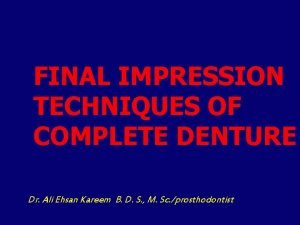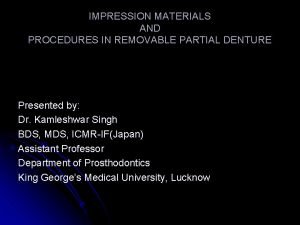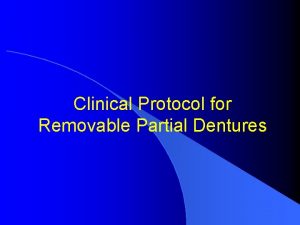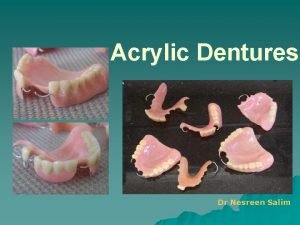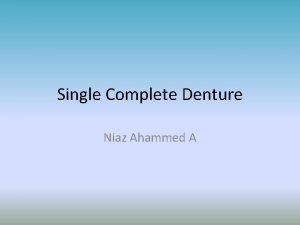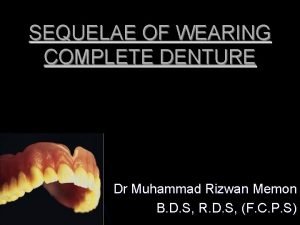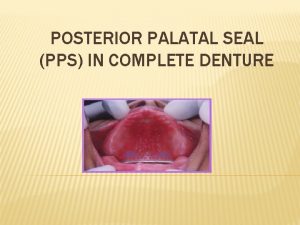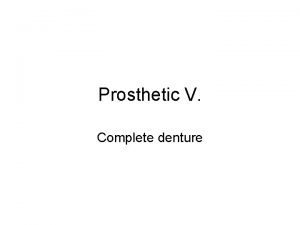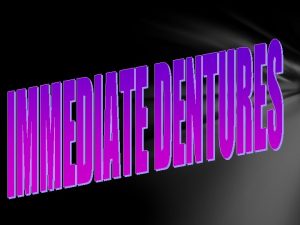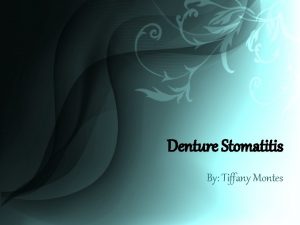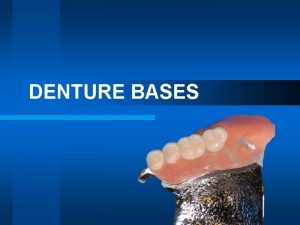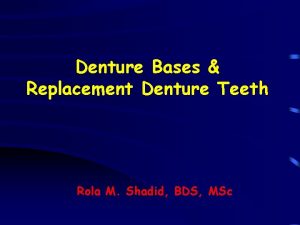FINAL IMPRESSION TECHNIQUES OF COMPLETE DENTURE Dr Ali







- Slides: 7

FINAL IMPRESSION TECHNIQUES OF COMPLETE DENTURE Dr. Ali Ehsan Kareem B. D. S. , M. Sc. /prosthodontist

Final impression techniques of complete denture 1. Mucostatic or non pressure technique: Principles of mucostatic impression technique: 1. Tissue must be healthy (on inflammation or ulcer) 2. Using spaced special tray with no border seal by tracing. 3. It should cover only the static part of denture bearing area. 4. A slight and a very limited pressure should be exerted. 5. A soft impression material ……… (plaster of pairs).

Making mucostatic final impression : Ø patient sit in upright position Ø open his mouth halfway the Ø special tray inserted with very limited pressure and index fingers are placed in first molar region on each side. Ø After complete contact of posterior border of the special tray with the hamular notch and palate, the fingers of one hand are shifted into the middle of the tray and border molding is carried out by other hand. Ø 5. The trays removed from the patient mouth in (a single jerk) to break the seal.

2. Function or pressure impression technique: Types of function impression technique: 1. Digital pressure functional Impression technique: the dentist exerts pressure by his fingers on the tray during impression making. 2. occlusal pressure functional impression technique: in which the patient exerts pressure by closing against occlusion rims or teeth that are attached to impression trays

Principles of function impression technique: 1. The impression made with close fit tray and (Z. O. E) 2. A digital or an occlusal pressure should be applied. 3. We should perfect peripheral seal with tracing stick compound. 4. Tissue must be healthy (on inflammation or ulcer) Border molding or border refining: it is done by softening a tracing stick compound adding it to the special tray borders, temper it in warm water, seat the tray in the patient mouth and do border molding then remove the tray.

3. Selective pressure technique: It is made in spaced special trays with border molding material where the relief wax was present……. a pressureless impression is recorded. While the area where there was no relief wax……the tissues are recorded under pressure. The material used is Elastomers impression material.

Boxing the final impression and making the master cast: Boxing: is a procedure of preserving the functional width and depth of the sulcus in the final cast. Procedure: • Beading wax: a strip of wax approximately 2 -3 mm below the border and sealed to it with a spatula. • Boxing wax: a sheet of wax (10 -15 mm) above the impression borders. • Base plate wax: a sheet of wax can be used to fill the tongue space in the lower impression. ØThe mixed dental stone is poured into boxed impression.
